Your The use of cloning to produce special embryonic stem cells is called images are ready in this website. The use of cloning to produce special embryonic stem cells is called are a topic that is being searched for and liked by netizens now. You can Get the The use of cloning to produce special embryonic stem cells is called files here. Find and Download all royalty-free images.
If you’re looking for the use of cloning to produce special embryonic stem cells is called images information connected with to the the use of cloning to produce special embryonic stem cells is called keyword, you have visit the ideal site. Our site always gives you hints for downloading the highest quality video and image content, please kindly search and locate more informative video articles and graphics that match your interests.
The Use Of Cloning To Produce Special Embryonic Stem Cells Is Called. Therapeutic cloning uses enucleated human eggs and somatic cell nuclear transfer technology to create a human embryo that is a genetic clone of the patient. Technically called somatic-cell nuclear transfer therapeutic cloning means producing embryonic cells genetically identical to a donor usually for. Therapeutic cloning is aimed at producing cloned embryos from which embryonic stem cells may be obtained. The latter procedure was closely linked to stem cell research as one of its central applications involves the creation of cloned embryos for use in the extraction of stem cells.
 Organismal Cloning Advent Of Stem Cell And Transgenic Animal Biotechnologies Modern Biotechnology Defining And Solving Human Problems From ebrary.net
Organismal Cloning Advent Of Stem Cell And Transgenic Animal Biotechnologies Modern Biotechnology Defining And Solving Human Problems From ebrary.net
However in this case SCNT was used to produce embryonic stem cell lines in a lab not living organisms via a pregnancy. The embryo is destroyed to obtain embryonic stem cells that have the same genotype as the patient. Therapeutic cloning uses enucleated human eggs and somatic cell nuclear transfer technology to create a human embryo that is a genetic clone of the patient. An embryo at the blastocyst stage Human cloning has been used to produce early embryos marking a significant step for medicine say US scientists. Most groups gave up long ago on the finicky core method production of patient-specific embryonic stem cells ESCs from cloning. The use of cloning to produce special embryonic stem cells is called _____ present embryonic adult Adult stem cells are _________presentnot present in adult tissues.
Technically called somatic-cell nuclear transfer therapeutic cloning means producing embryonic cells genetically identical to a donor usually for.
General Stem Cell Knowledge Cloning or somatic cell nuclear transfer SCNT is the technique used to produce Dolly the sheep the first animal to be produced as a genetic copy of another adult. This is done ostensibly to use the stem cells to treat disease or illness. Most groups gave up long ago on the finicky core method production of patient-specific embryonic stem cells ESCs from cloning. An embryo at the blastocyst stage Human cloning has been used to produce early embryos marking a significant step for medicine say US scientists. The use of cloning to produce special embryonic stem cells is called _____ present embryonic adult Adult stem cells are _________presentnot present in adult tissues. Technically called somatic-cell nuclear transfer therapeutic cloning means producing embryonic cells genetically identical to a donor usually for.
 Source: nbcnews.com
Source: nbcnews.com
While this is laudable in one sense there are serious ethical issues that arise see the following stem cell section. The use of cloning to produce special embryonic stem cells is called _____ present embryonic adult Adult stem cells are _________presentnot present in adult tissues. This is done ostensibly to use the stem cells to treat disease or illness. The therapeutic part of the name is included because of the hope that SCNT produced embryonic stem cells could have clinical utility. An embryo at the blastocyst stage Human cloning has been used to produce early embryos marking a significant step for medicine say US scientists.
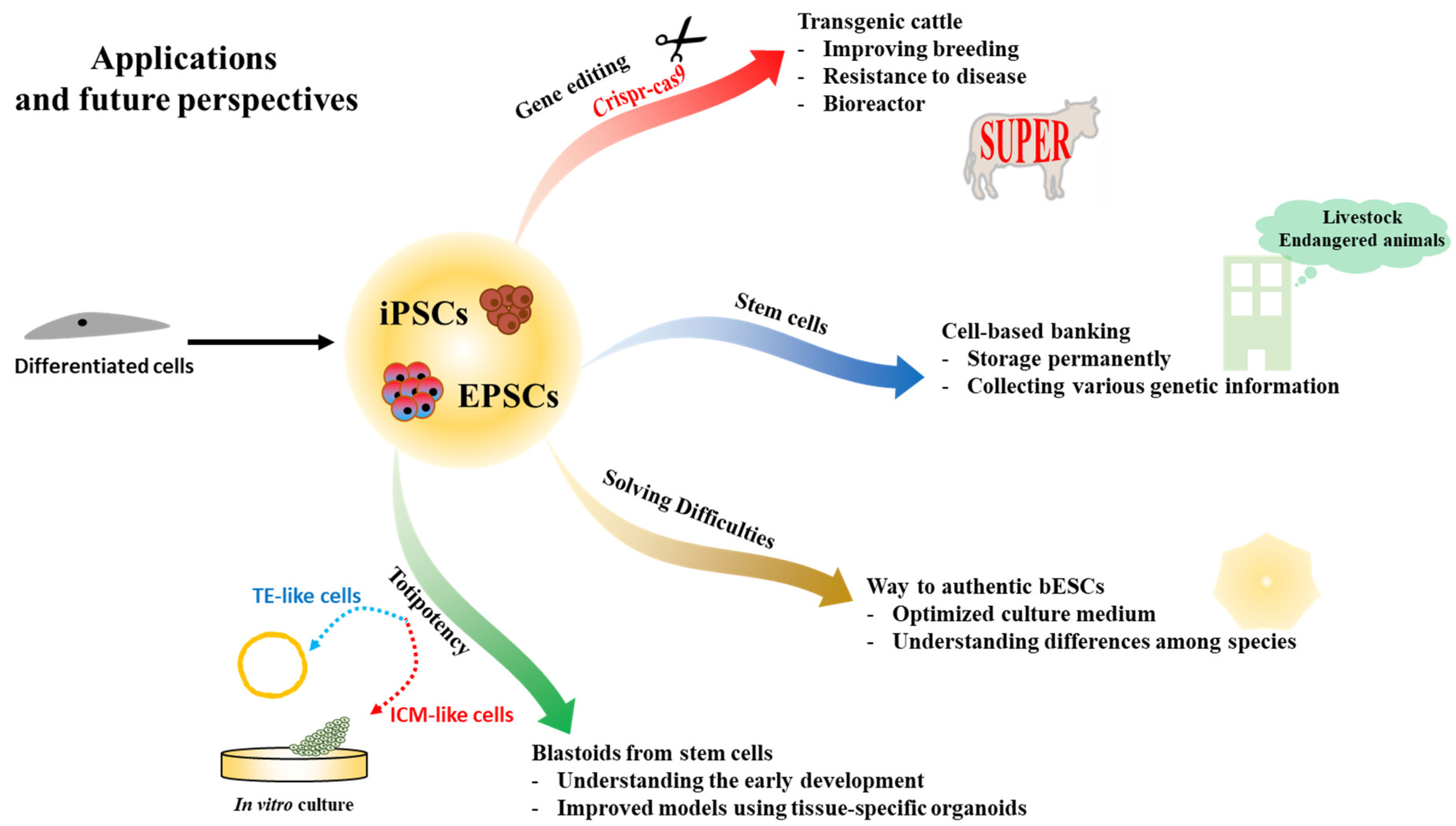 Source: mdpi.com
Source: mdpi.com
In this procedure the nucleus of an egg cell is removed. An embryo at the blastocyst stage Human cloning has been used to produce early embryos marking a significant step for medicine say US scientists. To produce the cloned embryos all three groups used an optimized version of the laboratory technique called somatic-cell nuclear transfer SCNT where the nucleus from a patients cell is placed. The therapeutic part of the name is included because of the hope that SCNT produced embryonic stem cells could have clinical utility. Therapeutic cloning uses enucleated human eggs and somatic cell nuclear transfer technology to create a human embryo that is a genetic clone of the patient.

Most groups gave up long ago on the finicky core method production of patient-specific embryonic stem cells ESCs from cloning. While this is laudable in one sense there are serious ethical issues that arise see the following stem cell section. Therapeutic cloning uses enucleated human eggs and somatic cell nuclear transfer technology to create a human embryo that is a genetic clone of the patient. An international research team has achieved a scientific first by producing embryonic stem cells from cloned embryos advancing the effort to generate. This is done ostensibly to use the stem cells to treat disease or illness.
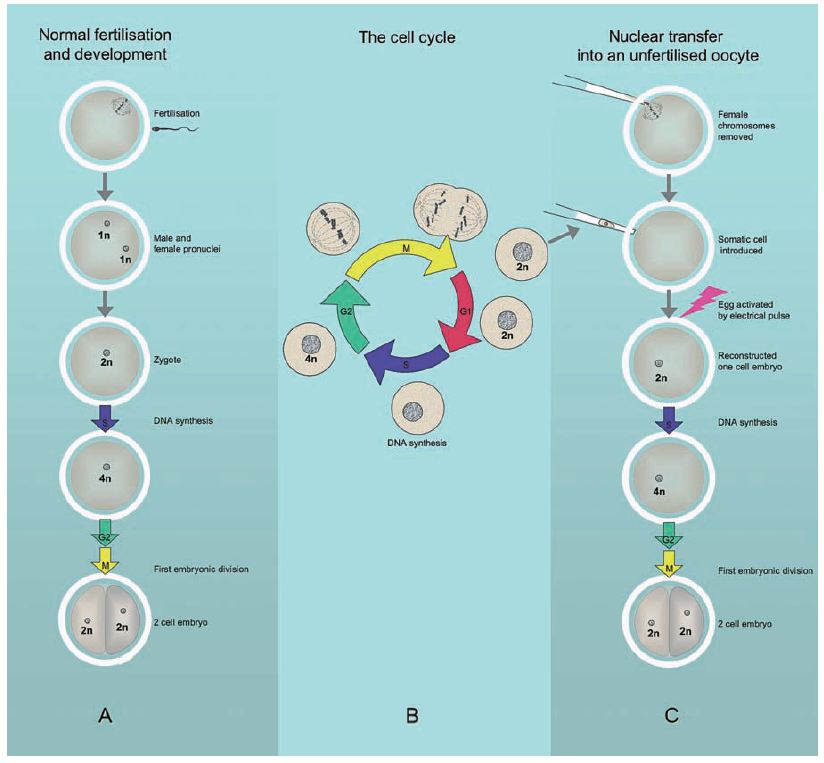 Source: bbvaopenmind.com
Source: bbvaopenmind.com
However in this case SCNT was used to produce embryonic stem cell lines in a lab not living organisms via a pregnancy. An international research team has achieved a scientific first by producing embryonic stem cells from cloned embryos advancing the effort to generate. The use of cloning to produce special embryonic stem cells is called _____ present embryonic adult Adult stem cells are _________presentnot present in adult tissues. Most groups gave up long ago on the finicky core method production of patient-specific embryonic stem cells ESCs from cloning. The cloned embryos were used as.
 Source: lozierinstitute.org
Source: lozierinstitute.org
Despite decisive House approval of a comprehensive ban on cloning to date there has been little or no movement on legislation in the Senate as neither side appears to have the votes needed for passage Dewar 2002. The latter procedure was closely linked to stem cell research as one of its central applications involves the creation of cloned embryos for use in the extraction of stem cells. The therapeutic part of the name is included because of the hope that SCNT produced embryonic stem cells could have clinical utility. To produce the cloned embryos all three groups used an optimized version of the laboratory technique called somatic-cell nuclear transfer SCNT where the nucleus from a patients cell is placed. Induced pluripotent stem cells.
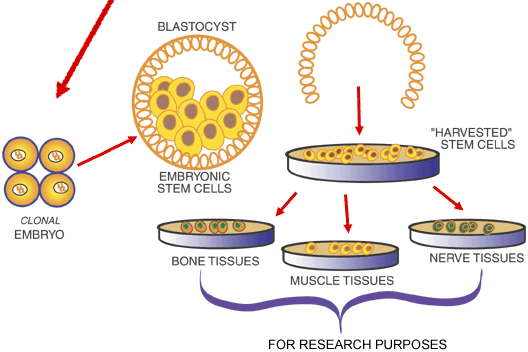 Source: bioethics.ac.uk
Source: bioethics.ac.uk
Technically called somatic-cell nuclear transfer therapeutic cloning means producing embryonic cells genetically identical to a donor usually for. Human embryonic stem cells are cloned. The embryo is destroyed to obtain embryonic stem cells that have the same genotype as the patient. Therapeutic cloning uses enucleated human eggs and somatic cell nuclear transfer technology to create a human embryo that is a genetic clone of the patient. However in this case SCNT was used to produce embryonic stem cell lines in a lab not living organisms via a pregnancy.
 Source: ebrary.net
Source: ebrary.net
In this procedure the nucleus of an egg cell is removed. The cloned embryos were used as. An international research team has achieved a scientific first by producing embryonic stem cells from cloned embryos advancing the effort to generate. An embryo at the blastocyst stage Human cloning has been used to produce early embryos marking a significant step for medicine say US scientists. Since then the approach has been enveloped in ethical debate tainted by fraud and in recent years overshadowed by a competing technology.
 Source: mhellmendoza.blogspot.com
Source: mhellmendoza.blogspot.com
General Stem Cell Knowledge Cloning or somatic cell nuclear transfer SCNT is the technique used to produce Dolly the sheep the first animal to be produced as a genetic copy of another adult. The use of cloning to produce special embryonic stem cells is called _____ present embryonic adult Adult stem cells are _________presentnot present in adult tissues. In this procedure the nucleus of an egg cell is removed. An international research team has achieved a scientific first by producing embryonic stem cells from cloned embryos advancing the effort to generate. The latter procedure was closely linked to stem cell research as one of its central applications involves the creation of cloned embryos for use in the extraction of stem cells.
 Source: sciencedirect.com
Source: sciencedirect.com
Since then the approach has been enveloped in ethical debate tainted by fraud and in recent years overshadowed by a competing technology. The latter procedure was closely linked to stem cell research as one of its central applications involves the creation of cloned embryos for use in the extraction of stem cells. The therapeutic part of the name is included because of the hope that SCNT produced embryonic stem cells could have clinical utility. However in this case SCNT was used to produce embryonic stem cell lines in a lab not living organisms via a pregnancy. Induced pluripotent stem cells.
 Source: bioprinciples.biosci.gatech.edu
Source: bioprinciples.biosci.gatech.edu
This is done ostensibly to use the stem cells to treat disease or illness. Since then the approach has been enveloped in ethical debate tainted by fraud and in recent years overshadowed by a competing technology. Therapeutic cloning uses enucleated human eggs and somatic cell nuclear transfer technology to create a human embryo that is a genetic clone of the patient. Human embryonic stem cells are cloned. The latter procedure was closely linked to stem cell research as one of its central applications involves the creation of cloned embryos for use in the extraction of stem cells.
 Source: cell.com
Source: cell.com
To produce the cloned embryos all three groups used an optimized version of the laboratory technique called somatic-cell nuclear transfer SCNT where the nucleus from a patients cell is placed. Therapeutic cloning is aimed at producing cloned embryos from which embryonic stem cells may be obtained. The cloned embryos were used as a source of stem cells which can make new heart muscle bone brain tissue or any other type of cell in the body. To produce the cloned embryos all three groups used an optimized version of the laboratory technique called somatic-cell nuclear transfer SCNT where the nucleus from a patients cell is placed. General Stem Cell Knowledge Cloning or somatic cell nuclear transfer SCNT is the technique used to produce Dolly the sheep the first animal to be produced as a genetic copy of another adult.
 Source: lozierinstitute.org
Source: lozierinstitute.org
Since then the approach has been enveloped in ethical debate tainted by fraud and in recent years overshadowed by a competing technology. Therapeutic cloning is aimed at producing cloned embryos from which embryonic stem cells may be obtained. Therapeutic cloning uses enucleated human eggs and somatic cell nuclear transfer technology to create a human embryo that is a genetic clone of the patient. An international research team has achieved a scientific first by producing embryonic stem cells from cloned embryos advancing the effort to generate. The embryo is destroyed to obtain embryonic stem cells that have the same genotype as the patient.
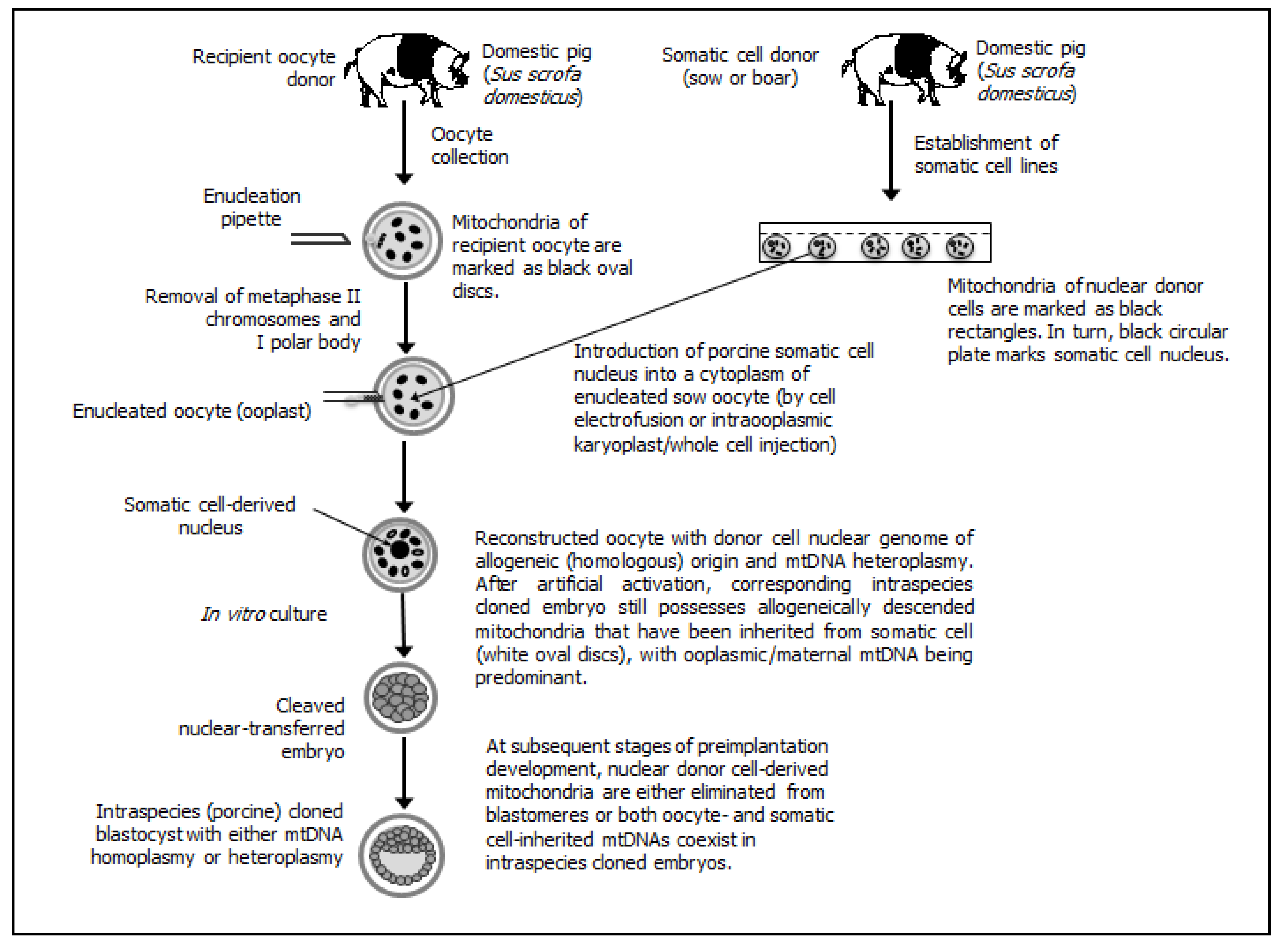 Source: mdpi.com
Source: mdpi.com
This is done ostensibly to use the stem cells to treat disease or illness. Induced pluripotent stem cells. The use of cloning to produce special embryonic stem cells is called _____ present embryonic adult Adult stem cells are _________presentnot present in adult tissues. While this is laudable in one sense there are serious ethical issues that arise see the following stem cell section. The embryo is destroyed to obtain embryonic stem cells that have the same genotype as the patient.
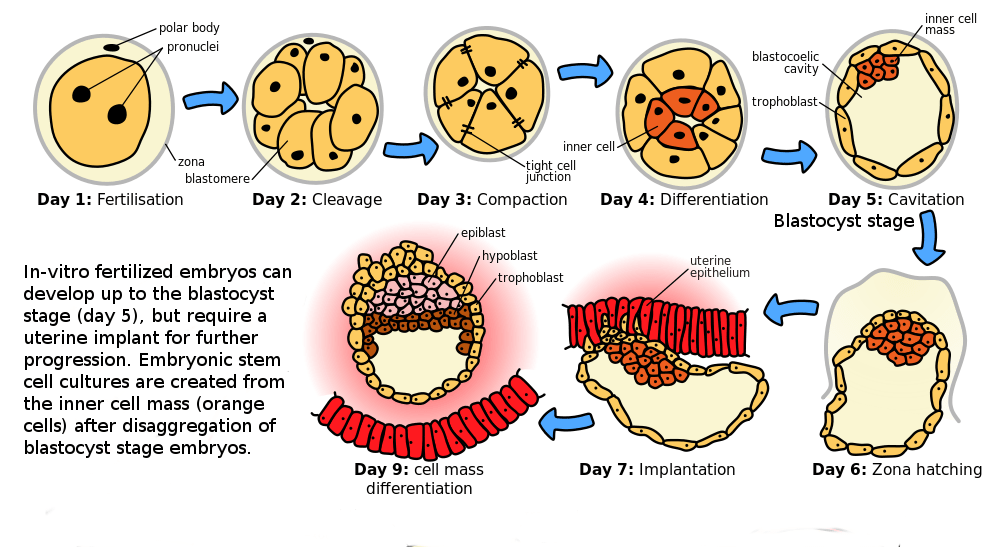 Source: bioprinciples.biosci.gatech.edu
Source: bioprinciples.biosci.gatech.edu
An embryo at the blastocyst stage Human cloning has been used to produce early embryos marking a significant step for medicine say US scientists. While the method might be considered a technique for cloning stem cells commonly called therapeutic cloning the same method would not likely be successful in producing human clones. An international research team has achieved a scientific first by producing embryonic stem cells from cloned embryos advancing the effort to generate. Despite decisive House approval of a comprehensive ban on cloning to date there has been little or no movement on legislation in the Senate as neither side appears to have the votes needed for passage Dewar 2002. The cloned embryos were used as a source of stem cells which can make new heart muscle bone brain tissue or any other type of cell in the body.
 Source: nbcnews.com
Source: nbcnews.com
This is done ostensibly to use the stem cells to treat disease or illness. Since then the approach has been enveloped in ethical debate tainted by fraud and in recent years overshadowed by a competing technology. Despite decisive House approval of a comprehensive ban on cloning to date there has been little or no movement on legislation in the Senate as neither side appears to have the votes needed for passage Dewar 2002. Therapeutic cloning is aimed at producing cloned embryos from which embryonic stem cells may be obtained. The use of cloning to produce special embryonic stem cells is called _____ present embryonic adult Adult stem cells are _________presentnot present in adult tissues.
 Source: usatoday.com
Source: usatoday.com
Technically called somatic-cell nuclear transfer therapeutic cloning means producing embryonic cells genetically identical to a donor usually for. The cloned embryos were used as a source of stem cells which can make new heart muscle bone brain tissue or any other type of cell in the body. However in this case SCNT was used to produce embryonic stem cell lines in a lab not living organisms via a pregnancy. This is done ostensibly to use the stem cells to treat disease or illness. While this is laudable in one sense there are serious ethical issues that arise see the following stem cell section.
 Source: npr.org
Source: npr.org
Therapeutic cloning is aimed at producing cloned embryos from which embryonic stem cells may be obtained. In this procedure the nucleus of an egg cell is removed. The therapeutic part of the name is included because of the hope that SCNT produced embryonic stem cells could have clinical utility. Human embryonic stem cells are cloned. Since then the approach has been enveloped in ethical debate tainted by fraud and in recent years overshadowed by a competing technology.
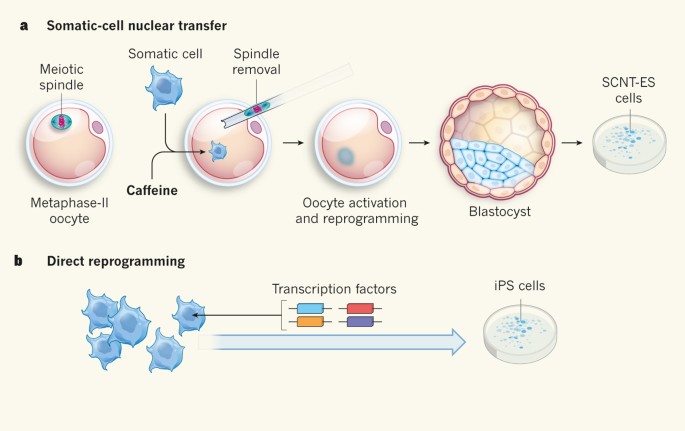 Source: nature.com
Source: nature.com
The cloned embryos were used as. The use of cloning to produce special embryonic stem cells is called _____ present embryonic adult Adult stem cells are _________presentnot present in adult tissues. The therapeutic part of the name is included because of the hope that SCNT produced embryonic stem cells could have clinical utility. In this procedure the nucleus of an egg cell is removed. Therapeutic cloning uses enucleated human eggs and somatic cell nuclear transfer technology to create a human embryo that is a genetic clone of the patient.
This site is an open community for users to do submittion their favorite wallpapers on the internet, all images or pictures in this website are for personal wallpaper use only, it is stricly prohibited to use this wallpaper for commercial purposes, if you are the author and find this image is shared without your permission, please kindly raise a DMCA report to Us.
If you find this site good, please support us by sharing this posts to your preference social media accounts like Facebook, Instagram and so on or you can also bookmark this blog page with the title the use of cloning to produce special embryonic stem cells is called by using Ctrl + D for devices a laptop with a Windows operating system or Command + D for laptops with an Apple operating system. If you use a smartphone, you can also use the drawer menu of the browser you are using. Whether it’s a Windows, Mac, iOS or Android operating system, you will still be able to bookmark this website.





